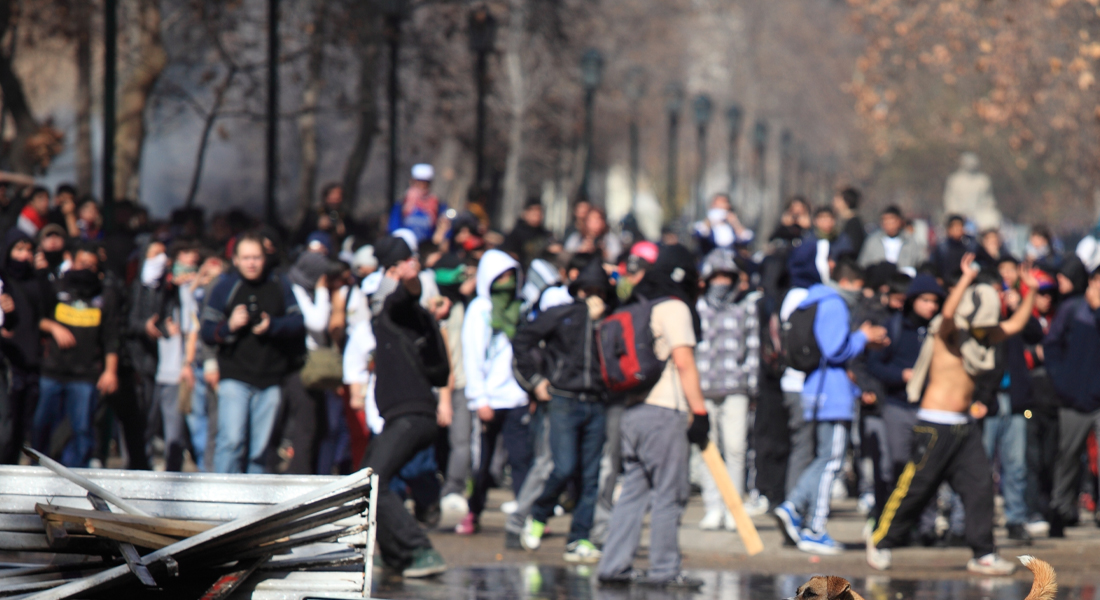
Aspen Cyber Team Take a Deep Dive into Cyber
Recent high profile cyberattacks have brought cyber coverage firmly into the spotlight and insurers are at the sharp end, faced with closing a significant insurance...

Aspen’s Crisis Management Underwriter, George Barratt spoke with Insurance Journal calling attention to the circumstances giving rise to elevated SRCC risks.
Senior insurance and reinsurance leaders are increasingly concerned about the aggregation risks associated with strikes, riots and civil commotion (SRCC)—a growing threat in countries across the globe.
Over the past five years, there have been many instances of violent unrest across the globe, such as Chile and Hong Kong in 2019; the United States in 2020; South Africa in 2021; Ecuador and Peru in 2022; France in 2023. And there is a risk that there could be more violence ahead given the fact that there will be 76 elections in countries across the globe this year, which need to be considered by insurers as well as political leaders.
The vastness, severity and increasing frequency of these SRCC events focused attention on the next potential site of unrest. SRCC now ranks among insureds’ top concerns when considering their global exposures.
Global Election Super-Cycle Raises Risk of Political Violence, Large Insurance Losses
During last year’s Rendez-Vous de Septembre in Monte Carlo, a critical topic of discussion was on aggregation risks associated with SRCC events. C-suite leaders attending voiced concerns over its increasing frequency and intensity, as well as discussed whether SRCC coverage should be placed solely within the specialist, standalone war, terrorism and political violence market, as opposed to still being offered within property all-risk programs.
Recent evidence of property all-risk programs bearing the brunt of SRCC occurrences can be found in both the Chile 2019 unrest as well as the 2020 unrest in the US, where SRCC coverage was provided as a sublimit/extension to the broader property coverage on an unaggregated basis.
A similar picture emerged after the France riots in the summer of 2023, raising the following questions:
The continued geographical spread and scale of mass protests has been seen more recently in the form of pro-Palestine protests in cities across the globe. London, in particular, has had protests the size of which haven’t been seen since the war in Iraq. These protests serve as a reminder of the ability of local populations to swiftly mobilize en masse behind a common cause or grievance.
Following such examples of violent unrest within the past five years, there is a responsibility on the insurance community to adequately plan and prepare for the rising intensity and frequency of SRCC events. Further, it is critical that this coverage not only sits within the specialist market but is aggregated appropriately to ensure that re/insurers are not caught off guard.
To understand why SRCC events are becoming a more common and destructive occurrence, a review of the motivating factors behind them is required. Spotting these markers in advance can prove to be a useful bellwether as to whether unrest in a given territory is likely to occur.
For example, understanding common grievances among local populations and the use of social media in proliferating the size and scale of protests and unrest can provide a useful guide to spotting potential future SRCC events. A discussion of these two factors follows here.
Shared Grievances
Longstanding social pressures have played a central role behind local populations resorting to violent unrest in recent years. Inequality, poverty, unemployment, corruption, police brutality, state/government overreach and the high cost of living have either individually or collectively played a part in the uptick of SRCC incidents.
Territories that recently experienced violent unrest have typically been a tinderbox filled with underlying social grievances that only required one decision or action to provide the necessary spark to ignite those collective underlying frustrations.
Chile in 2019 saw unrest initially over a rate hike in metro fares before dissatisfaction over the general cost of living and inequality in Chilean society took hold, leading to three months of widespread looting and property damage.
Police brutality and excessive use of force in the US (2020) and France (2023) were the catalysts that resulted in some of the worst levels of unrest and damage the two nations have experienced in recent memory.
In South Africa, the imprisonment of former President Jacob Zuma for contempt of court led to initial unrest in Zuma’s home province of KwaZula-Natal (KZN) in 2021. However, the situation rapidly deteriorated when opportunists, wracked by extreme poverty and unemployment exacerbated by both the pandemic and continued government corruption, seized the opportunity with widespread looting in KZN and Gauteng across eight violent days that shook the territory to its core.
As the unrest finally subsided and order was restored by security forces following each of these episodes, industrywide estimated SRCC losses for Chile and South Africa were each $3 billion, $2.7 billion for the US, and $778 million for France.
Social Media
The power of social media as a tool for information sharing, as well as its utilization in mobilizing popular protests movements, was first championed during the Arab Spring in 2011 to a powerful effect. It continues to remain a formidable force, in not just the mobilization of local populations during unrest but in the sharing of incendiary images and videos of injustices carried out by local security forces that often foment the unrest in the first instance.
For evidence of the power and influence of social media in inducing recent unrest, one only needs to look to the events in the US in 2020 and France in 2023. The murder of George Floyd by a police officer on the street in Minneapolis and the shooting of Nahel M in Paris during a traffic stop, also by a police officer, were both captured by bystanders on camera before being disseminated online within minutes.
In both nations, where distrust of local law enforcement and evidence of police brutality is regarded by many citizens as commonplace, the sharing of such violent and distressing images has led to nationwide unrest.
In the age of smartphones, ordinary citizens can easily document and share images and videos on social media of perceived or indisputable injustices that stoke dissent among local populations as well as organize timings and locations for protests to take place. In the years ahead, social media can expect to continue to play as powerful a role as it did in both the US and France.
Preparing for Possible SRCC Events
Both South Africa and the US are holding elections in 2024.
In South Africa, polls currently predict that the ruling ANC vote share will drop below 50% for the first time since they came to power in 1994. With the strong possibility of a coalition government approaching, the country is potentially heading for new, unchartered waters.
As for the US, there is a genuine prospect of a second Trump term as he looks likely to be the Republicans’ presumptive nominee. With the violent assault on the Capitol that culminated the end of his first term still etched in the collective psyche of many Americans, it is understandable that there is concern of potential repeat violence should Trump again be on the ballot.
With more than half the global population—4.2 billion people—voting in 76 elections in 2024, the risk of further SRCC events in the build-up or aftermath is another point of consideration for those with interests in the territories involved. It is timely that questions are increasingly asked as to whether adequate coverage is in place to protect an insured’s interests against potential unrest in the near future.
The original article featured in Insurance Journal.
“There is a responsibility on the insurance community to adequately plan and prepare for the rising intensity and frequency of SRCC events. Further, it is critical that this coverage not only sits within the specialist market but is aggregated appropriately.”
George Barratt Crisis Management Underwriter